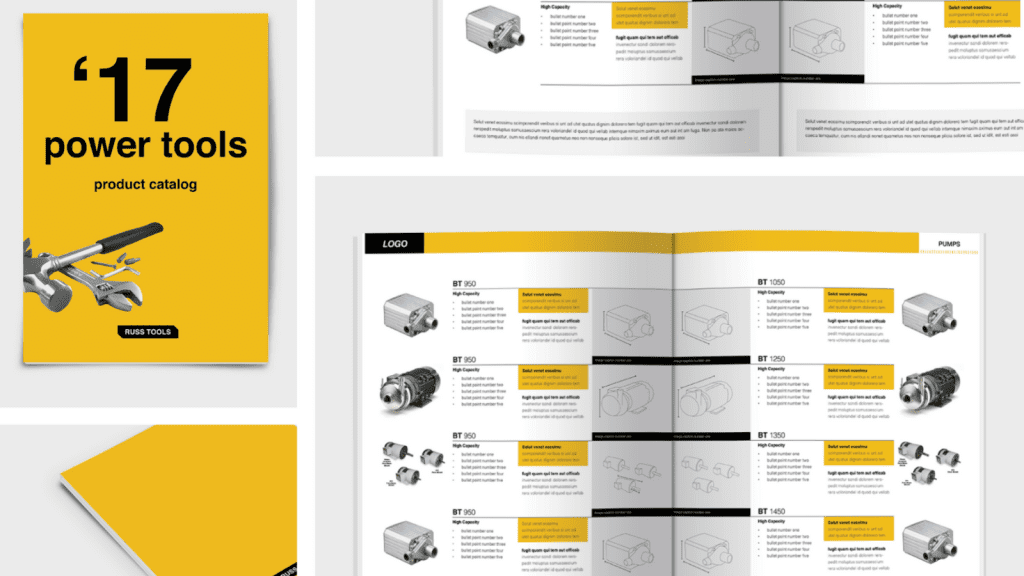7 Reasons to Automate your B2B eCommerce Operations with PIM and DAM

In this Article
Today, 73% of B2B buyers are millennials who make their purchases online. PIM software and DAM software automate processes catering to all generations of buyers, young and old, as the B2B sector evolves.
From changes in the buyer demographic to the transition from traditional marketing, successful B2B quickly adapts to these trends.
For example, before 2020, the B2B buyer demographic was made up of baby boomers, and Generation X.
New data shows an 80% average of the B2B buyer journey taking place online. B2B eCommerce organizations are beginning to recognize the importance of adopting digital processes. The direct result is an improved and personalized buying experience.
The fastest way to achieve scalable personalization is through automation. By automating product information and digital assets, B2B eCommerce can enhance the buyer journey for B2B shoppers.
In addition, automation accelerates product speed to market, increasing Return on Investment (ROI).
This blog will discuss seven reasons why PIM and DAM can work hand in hand to help your teams create complete products, fast.
First things first.
What is Product Information Management (PIM)?
A Product Information Management (PIM) system acts as a single point of truth for all types of product data. PIM aids eCommerce stores in enriching product information, product categorization and distribution across numerous sales channels. As a result, your team can develop and deliver enhanced product data at a faster rate.
What is Digital Assets Management (DAM)?
Many businesses require a centralized location to access their media assets. Digital asset management is an information management system that can more effectively store, organize, optimize, access, and distribute digital assets.

DAM and PIM are not the same.
If you think purchasing a DAM solution would cater to your PIM needs, you’re wrong. DAM and PIM perform distinctive functions.
The key difference is that Digital Asset Management software deals with all of an organization’s digital assets. Product Information Management, however, focuses on a product’s lifecycle.
PIM and DAM provide value to businesses in two different ways. DAM software stores and manages brand assets such as logos, graphics, videos, text, etc, electronically. Meanwhile, PIM solution allows you to retrieve and deploy these assets across many online stores or marketplaces.
A combination of the two tools can make your eCommerce production unstoppable.
Combining PIM and DAM in your eCommerce system is beneficial.
B2B eCommerce sellers can scale production by automating repetitive tasks with PIM and DAM.
Hundreds of processes run at the same time in a typical eCommerce business. From onboarding to sales, every stage is essential. The success or failure of the company depends on how fast and accurately these processes are completed.
Imagine that it takes a marketing team member 40 minutes daily to re-size assets manually; that’s 400 minutes for ten similar staff. Automating can save an incredible amount of time, allowing for more time spent on other productive aspects of the business.
By collecting all the essential product information and digital assets in a central source, PIM and DAM systems enhance product-to market-speed and the competitive advantage of B2B eCommerce enterprises.
Features of PIM and DAM tailored to B2B product information include:
1. Importing Data from Excel and CSV
Excel and CSV sheets used to be the most common storage systems for product data such as images, texts, specs, and product catalogs.
But eCommerce managers soon discovered that it was challenging to scale production on excel.
For instance, excel sheets will not detect spelling errors in the product description, nor can they be connected with relevant eCommerce software systems.
Aside from that, managing product data across a gazillion rows and columns is unrealistic.
PIM and DAM can easily import raw product data from excel, CSV, or any other source into a centralized system. In addition, they are modeled with an intuitive user interface that makes eCommerce product management a breeze.
2. Manage multiple product catalogs at once:

You have many products to edit and publish in a short time. For example, you own a large bookstore where you sell directly to resellers. You have just received new stocks, and need to update product information.
To create new product categories, you need to upload the description, size, weight, amount in stock, cover type, etc. This is time-consuming if you have to input information manually.
Alternatively, an eCommerce sales rep can bulk-import brand collaterals, like graphic designs and product cards. With a centralized hub, marketing can use product information management software to categorize and bulk-edit similar products according to their value.
Automating this process with DAM and PIM ensures accurate product information is published. In the process, boosting efficiency and productivity by reducing manual effort.
3. Advanced search features:
Searching is among the most basic activities for any organization. However, having the right searching capability can dramatically transform your processes.
You need to find specific data to finish a job. In B2B eCommerce stores, it is crucial to find and use accurate product data at any time required. But manual search is an arduous task.
Let’s say the designer needs a specific image of a model to create a graphical representation of a product for an ad. They may have to search through a hundred similar images if these assets have storage other than DAM.
Using the wrong image, however, presents a false representation of the product to your customers. We all know how bad that is for a business.

1. Successful B2B eCommerce sellers combine DAM and PIM to ensure complete product data and digital asset representation.
The quality of product information a B2B eCommerce supplier pushes to the public will determine the engagement received in return.
Generating robust engagements that convert to sales involves B2B eCommerce suppliers presenting their products in an appealing way to target consumers.
For instance, an eCommerce store selling light bulbs can:
- Create unlimited product categories (e.g. size).
- Create unique product families according to price or specific offers (e.g. product material).
- Use creative attributes to differentiate these products (e.g. ambiance).

Aside from that, eCommerce sellers using PIM have the flexibility of writing unlimited character descriptions. The standard length of a product description is around 300 to 400 words.
However, some eCommerce hosting services have more limiting description standards.
A detailed and sharp-witted product description will attract customers and help the B2B sellers build credibility.
Therefore, they must structure and publish their products on a PIM/DAM integrated system.
Aside from creating unique product categories, families, and attributes, PIM also tracks and ranks the completeness of each type.
A short case study:
An eCommerce store selling and shipping electronic gadgets uses PIM to create various categories and product attributes. This step is necessary to attract the right audience.
One of the categories informs the customer if a product is available for shipping. Provided that the PIM administrator has marked this section as compulsory, it would be impossible to publish this product if the section is not completed.
Imagine you’re using traditional eCommerce hosting. Chances are, the salesperson may forget to mark the product as available for shipping. As a result, your company may lose customers before they realize this error.
Most PIM systems would rank product information from A-F to show the degree of completeness. Coupled with a colorful visualization dashboard, eCommerce sellers using PIM have an advantage.
Marketers can easily identify an incomplete product catalog or anyone with specific errors that require corrections using PIM’s content grader.
Is there a limit to what B2B eCommerce sellers can do with PIM? Maybe not.

2. DAM and PIM make resource sharing and collaboration easier for B2B eCommerce enterprises.
Teamwork makes dreams work, they say. And that holds true for B2B eCommerce sellers as much as any other enterprise.
Running an eCommerce store requires many moving parts. At every point, everyone must take responsibility for specific tasks. Similarly, their input must be relevant and measurable.
With the integration of PIM/DAM systems, you can easily organize tasks across the team to see what products, attributes, or assets each member is responsible for.
How PIM enhances digital collaboration:

Digital marketing becomes more effective with PIM as marketers can provide up-to-date, detailed product content to your online store.
Product completeness through automated product information is a key factor for the enhancement of business to business buying journey. A buyer’s journey entails awareness, consideration and finally making a decision.
With PIM comes the benefit of enhancing this buying process. The more accessible product information is, the more it creates awareness.
Automation enhances the buyer’s consideration which eventually influences the decision to make a purchase.
Information about your product to potential buyers means a reduction in rate of return for your product. Prior to purchase, buyers are informed on exactly what your product does to solve their problem.
Conversions increase because of a clear buyer experience.
PIM and DAM ensure impressive delivery of product information.
PIM and DAM empowers your organization to hit the ground running. Easy location of up-to-date digital assets and product information immediatley creates a clean brand representation.
When team members locate what they need when they need it they become more flexible to market requests. Securing and distributing the right assets at the appropriate time in an automated fashion is extremely valuable.
Now, this is what I regard as an impressive delivery of product information. Information is the key that unlocks movement towards whatever you have to offer to the market. Ensuring impressive content is highly beneficial.
Automation means eliminating the need for manual entries. Through eliminating manual entries, you give room for accurate product delivery to go where it is intended to go.
How PIM and DAM eradicate redundancies:
Repetitive tasks sometimes attract human error, which impedes impressive delivery of product information. This is the kind of value that comes with making use of DAM and PIM for your organisation.
Product information delivery through PIM and DAM also means reduction of any kind of redundancies by relying on a single source of truth.
Your professional team has the ability to juggle with lots of data and sell to multi sales channels with astounding precision of information that matter to your potential buyers.
It’s one thing to create compelling content and information and it’s another to find a strategy to effectively distribute such information.
Automating with PIM and DAM means finding a strategy to effectively distribute information that can convert and increase productivity for your organisation.

3. B2B eCommerce buyer experience improved with PIM and DAM.
Product Information Management provides relevance to online stores and all ecommerce related enterprises. PIM is able to deal with cross department product related content and this means there is consolidation and management of product catalog in one place.
PIM serves as a central product content management system that assists in standardizing information for wider use. That means all scattered data can be consolidated under one source of truth.
This benefit is great for buyer journey enhancement. Product information that is organized and accurate creates the appropriate brand awareness and consideration.
PIM deals with product information that include all stock keeping units{SKU}, names, titles, descriptions, prices, product review which are all kept under one place.
This translates into enriched product information, product catalog that can be distributed to sales channels or ecommerce channels. The richer the information about your products the more it enhances the buyer journey which eventually leads to better conversions.
A sure way to reach the market faster than your competitors because not only do you have compelling information but through automation you can speed the rate of providing relevant information for B2B related purchases.
Automating means a software that will complete tasks for you as opposed to doing the task manually on repetition.
Accurate product data is critical.
Precision of product information can positively influence the buyer journey through consideration and awareness. Potential buyers tend to recall or remember information that is appealing to their immediate needs. PIM has the effect of creating such results.
Buyer journey includes awareness, it’s the awareness that influences the product consideration and the final decision.
In today’s world speed is everything in regards to being competitive, automation with PIM means reduction of human error in relation to product information on different sales channels. Sales channel extends your audience which is one of the advantages of Product Information Management
Without management of data in the digital era you will eventually become obsolete and that is the last thing you would want for your ecommerce enterprise.
PIM means the ability to standardize product related information, standardizing is such an important factor when ascertaining efficiency, this translates into consistency of quality information that enhances your buyer journey.
Like most everything, consistency is key.
Standardized information leads to consistency, with consistency comes the speed to your desired market. Automation in combination with PIM and DAM gives your potential buyer consistency of information which they can consume so they can consider what you have to offer in relation to their needs.
Automation means doing small repetitive daily tasks that are always done in a consistent way. For example sending newsletters to regular buyers, sending high value content to your dream buyers.
Automation gives the ability to lessen your workload, working less while producing more desired results for your business. Automation translates into providing personalized experience which is a good way to enhance your buyer journey.
The experience you create to your potential buyer is what converts a mere consideration into a decision, with automation comes the consistency of standardized experience that can be replicated on various potential buyers.
Scalable Operations Internally and Globally.
Automation with DAM and PIM gives way to standardized information dissemination for your brand and organisation.
Standardized operations can be repeated and such repetitions can be scalable both internally and globally. This is the beauty that comes with making use of PIM and DAM.
Scalable operations help organization become more effective:
• Standard company information can guarantee quality. Team members and organizational employees have access to a proven, reliable process that brings in results.
• Consistency reduces guess work. In other words, when objectives are clear, the audience receives clear information.
• Promotes productivity. Scalable operations allow for productivity to continue throughout organizational growth.
Information is easy to find or access through DAM and PIM reducing time involved in searching for information related to products or digital company assets.
Creates valuable company experience which can be a Unique Selling Point for your potential buyers. Standardized information that comes with PIM and DAM also means giving quality experience for those that may want to do business with you.

4. B2B eCommerce organizations can generate comprehensive Data insights and Analytics with a combination of PIM and DAM
eCommerce data analytics show how products are performing and where they are likely to be in the future.
This is a crucial component for the transformation of any eCommerce enterprise as it informs better business-decision making.
You can use PIM and DAM solutions to generate comprehensive insights on product performance and overall business data.
Extensively, they can also visualize the performance of every brand asset in interactive pie and graph to see the highest performers.
These automation solutions also recommend solutions when your product performance is below the mark, which will help them maintain brand consistency and efficient engagement in the market.
Speed new products and product update to market with a unified ecosystem.
By using PIM and DAM you have the advantage of an ecosystem of influential information for your dream buyer. What this really means is you have a centralized place for all high value information that includes quality images, video content, product related information which you can access, distribute and manage.
Scattered data is difficult to update but with DAM and PIM automatic product update which creates efficiency and effectiveness for your organization.
For example when creating a shopping experience that compels your potential dream buyers you definitely want to ensure product catalogues are up to date, catalogue renewals are efficiently managed.
Single source of truth ensures access to all information, reducing any form of distorted information to your market.
By using PIM and DAM you have the advantage of an ecosystem of influential information for your dream buyer. What this really means is you have a centralized place for all high value information that includes quality images, video content, product related information which you can access, distribute and manage.
One of the main purposes of Product Information Management is to help business owners with storage and updates of all information that relate to their products and detecting any kind of errors that occur.
Buyers are requesting more and more information about products before they commit to any kind of purchase decision that means the ability and capacity to provide relevant information to your market will lead to improved sales.
PIM integration with ERP.
With automation of PIM imperative information that influences purchase decisions can be something you can influence.
Here is one scenario to consider, let’s say you have an Enterprise Resource Planning {ERP} for your basic information but buyers request more beyond basic product information such as images which may be stored up in your google drive, potential buyers may request assembly information and warranty document which are stored up separately from ERP.
By the time you provide all the necessary information for your potential buyer it would come at the cost of time.
Reducing your speed to provide new products that would have just arrived. This is the problem that comes with efficient processes of managing data that your brand makes money from.
PIM and DAM gives you the agility to respond to requests that come from prospects through the sales channel with less rework through automation.
Omnichannel management made easy.
Dealing with each sale channel is a mammoth task, different distributors’ sales of different products which require different types of information with different formats not forgetting different pricing with different specifications.
Such demands can lead to potential buyers finding product information with incomplete and incorrect product data. When your potential buyer witnesses such inconsistencies that are likely to shy away from making any kind of product consideration.
DAM and PIM means you are fast at responding to different ecommerce platforms with their different demands in relation to information.
Automation with PIM and DAM is the icing on the cake because you don’t have to continuously edit product information to different sales channels.
Timely provision of data is speed to the market as you are able to reach a wider potential of buyers on various sales channels that they prefer.
Speed to the market is necessitated by reducing any kind of human error when updating your product listing through catalogues that distributors make use of.
Speed to your market is guaranteed through less duplicated effort and a single source of truth in combination with automation makes this a holistic approach to management and distribution of data.

5. Combining DAM and PIM will help B2B eCommerce sellers Create an intuitive Customer Experience.
The strength of your B2B is measured by customer satisfaction.
However, those familiar with the B2B world know that customer experience and satisfaction can be tricky metrics to measure.
To attract the right customers and leave them smiling even after a purchase goes beyond cutting down price or offering freebies.
Sometimes, the appearance of an eCommerce product catalog can be the differentiating factor.
How can DAM and PIM integration help B2B eCommerce sellers improve customer experience?
- Using a simplified product form: PIM uses an advanced, rich text interface that captures media files, images, text in one form. It also allows the upload of a 360 degree VR view of your product which helps target customers’ interaction with each product more intuitively.
- Automatic synchronization between CRM and B2B eCommerce platform: With the right tools, you can use DAM and PIM systems to build an ecosystem of your brand operations. Since brand collaterals and product data live in a central database, eCommerce admins can share contacts, private reviews, and requests from their CRM module to PIM and DAM. This information quickly updates product catalogs or design brand assets targeted at a new campaign.
- Asset Management: A combination of PIM and DAM will help you organize, enrich, link, and transform multimedia assets for specific channels with ease. Thus, you can target particular customer demography only.
- Reference Entities: you can use PIM and DAM to develop and link information about their data, such as brands, designs, and more, to provide a better product experience. Meta Tags can be generated from the DAM system and utilized in PIM to ensure accuracy across all product distribution channels.

6. B2B eCommerce businesses can supercharge content creation and management with PIM and DAM integration.
Content is more than just king for B2B eCommerce enterprises. It’s the kingmaker. Blog posts, email sequence, sales copies, Facebook ads, product demo videos, you name it- content marketing is at the heart of an agile B2B eCommerce business.
You can leverage the digital opportunities in content creation to increase your sales and reach new heights in your marketing efforts.
Integrating content creation and marketing efforts across a network of automated solutions is one way to achieve this feat.
PIM + DAM is great.
But PIM + DAM + ERP is even greater.
Let’s take visual B2B eCommerce marketing, for example. Hubspot’s statistics show that 70% of organizations invest in content marketing that includes visual marketing strategies.
Yes, that’s a massive figure. But are all these organizations using visual marketing as efficiently as possible?
Most B2B enterprises manage images and other visual assets on their ERP. Unfortunately, this can make your image repository messy, and most of the photos get siloed eventually.
In addition, more than 50% of marketing teams reportedly have scattered storage where thousands of files are lost on the team system.
There are various consequences for this kind of horrid management strategy. The most obvious is that they would struggle to maintain brand consistency or scale production as required.
So the case is simple. Every ERP needs DAM and PIM integration.
It’s not easy to manually sort folders according to specific attributes and rename each one when modified. Moreover, there is rarely any time for the core creative work.
That is why integrating ERP with PIM and DAM is essential. This automation software will streamline all of the manual operations.
For example, content creators can easily use AI-backed search features to quickly pull out a specific file from an ocean of others.
Automating with PIM and DAM leads to Optimized ROI.
Like customer satisfaction, Return on Investment is a critical component in the B2B eCommerce business. An increase in ROI means that sales and marketing efforts are yielding well.
Labour investment is as vital as financial credits in rendering B2B eCommerce business. For example, a typical B2B eCommerce staff earns an average salary of $73k/yr in exchange for their time.
Therefore, a mid-level small B2B enterprise with 50-100 staff would need hundreds of thousands of dollars to keep its team.
We should also note that these staff can commit human errors that could cost the business money.
Therefore, you should automate repetitive and technical tasks with PIM and DAM. It would help you save more money, speed up production time and increase overall efficiency by reducing human errors.
Reduction on rate of returns means less time for restocking, transaction costs affiliated with return of a product. Product returns are a top pain for online retailers with some reporting eCommerce return rate of 25%.
According to David Sobie who is the co founder of Happy returns there is a 15% to %40 for online purchase returns as compared to 5% to 15% return for brick and mortar shopping.
If such occurrences are not dealt with, this can translate into increased costs on account of shipping costs, restocking of returned product, not forgetting a really frustrated buyer who will give a report of their frustration to their social networks hence reducing the capability to expand your product offering to other potential buyers.
Product detail page with accurate product data and rich product content increases buyer confidence and manages product expectations to help minimize returns.
Leave manual entry behind.
Return on Investment (ROI) entails generating healthy sales for the business while managing the cost of doing business as well.
PIM and DAM has the benefit of boosting productivity in relation to efficient use of time.
Team members are able to find relevant information without wasting much time, these software enable delivery of product information to the market at a faster rate than competitors thus improving organizational provision of accurate information.
There are costs that are associated with inaccurate provision of data such as paying a fine for misleading information by regulatory compliance authorities. With PIM such irregularities will not occur.
Manual data entry is time consuming for your team as well. Effective use of time by your team members can increase your Return on Investment as they can focus on high value tasks that boost revenue for the organisation.
PIM and DAM enhance content for extended reach.
Greater reach to customers through automation with PIM and DAM is certainly another way to increase your Return on Investment as you are able to expand on your product information to various sales channels. In today’s world we now have so many different selling platforms.
The ability to deliver your information and content to all these platforms will lead to greater reach of potential buyers.
Without growth in sales any kind of business will eventually die, PIM and DAM gives you the competitive advantage to secure more customers with less work involved.
Efficiency and effectiveness is the foundation by which return on investment is realized, team members become efficient and effective through utilization of PIM and DAM.
Data reduction storage costs is also a cause of concern for a lot of online enterprises, DAM and PIM helps brands reduce their cost of storage.
Centralized storage allows data storage in the same amount of physical storage capacity while extending the life of existing assets.
With PIM and DAM you do not have to worry about extending the cost of more storage. The more you become efficient the better chances of increasing your ROI.
Your ROI will eventually affect your ability to grow your organisation as a whole.

7. B2B eCommerce enterprises will enhance Product Data Security with PIM and DAM automation.
When it comes to data management, eCommerce security is paramount.
Buying and selling services online is easy. But also very risky. It goes beyond the exchange of money and product.
By extension, B2B eCommerce sellers collect customer data such as names, location, phone number, address, etc., to provide the best customer experience possible.
An eCommerce website is exposed to cyber threats, most of which are a symptom of human negligence. However, if you don’t take data security seriously, you may run out of business faster than hare-speed.
This is why eCommerce enterprises must set up an advanced security system to protect their product information and digital assets.
DAM and PIM solutions can strengthen B2B eCommerce data security:
- Access Restrictions: B2B eCommerce administrators can govern product information and digital assets such that only accredited contributors have access. More-so, accredited contributors can be further restricted to view, edit or distribute only the product data they need. Doing that eliminates the possibility of copying or duplicating sensitive data on secondary channels. In cases where B2B eCommerce staff work remotely, this system will restrict contributors from printing, viewing, or reproducing digital assets or product information on unauthorized electronic devices which may be exposed to cyber attackers.
- Two-factor auth and OTP. Two-factor authentication and One-Time-Password are standard security authorization models that add an extra layer of protection on a B2B eCommerce product information and digital assets.
Both DAM and PIM are enabled to integrate these security systems. As such, eCommerce admins can generate a unique code for every login attempt, from contributors, into the automation system.
Conclusion
Like the internet, the B2B eCommerce world has become a global village as customers are closer to sellers and products than before.
B2B eCommerce companies that bring customers closer by migrating them into a multi-channel environment where interaction is faster, personalized and rewarding, are on the path to building a millennial reputation.
B2B sellers must organize and manage their integrated eCommerce operations into a Product Information Management and Digital Assets Management system to succeed.
As a result, products and services will be available to target buyers at their exact point of need.
PIM makes it easy to customize and publish product catalogs across multiple channels. More so, it helps you design product information according to customer experience on each channel.
With DAM, you can store, manage, retrieve and secure digital assets in a central hub.
Combining the two automation systems is easier to create a consistent brand perception, scale production, and improve overall customer satisfaction.
To learn more about Catsy’s PIM, DAM and Workflow solutions, visit the website or schedule a live demo here.
DAM (Digital Asset Management) focuses on organizing, storing, and distributing digital assets such as images, videos, and documents. PIM (Product Information Management) focuses on managing and enriching product data, including attributes, descriptions, and specifications. While both are important for B2B eCommerce, DAM and PIM serve different purposes but can be combined to ensure complete product data and digital asset representation.
DAM and PIM provide centralized platforms for storing and accessing digital assets and product data. This makes it easier for teams within B2B eCommerce enterprises to collaborate, share resources, and maintain consistency across different channels. With DAM and PIM, teams can work together more efficiently, reducing duplication of efforts and streamlining the workflow.
By combining PIM and DAM, B2B eCommerce sellers can ensure that accurate and up-to-date product data and digital assets are available to buyers. This enhances the buyer experience by providing comprehensive and consistent information about products, enabling buyers to make informed decisions. Additionally, high-quality digital assets can enhance product presentations, making the buying process more visually appealing and engaging.
B2B eCommerce organizations can gather and analyze data from both product information and digital assets. This enables them to gain deeper insights into customer preferences, product performance, and content effectiveness. By leveraging comprehensive data insights, organizations can make data-driven decisions to optimize their B2B eCommerce operations and improve overall performance.
PIM and DAM automation can enhance product data security in B2B eCommerce by providing controlled access to digital assets and product information. Through user permissions and access controls, organizations can ensure that sensitive data is only accessible to authorized individuals. Additionally, automated backups and version control mechanisms offered by PIM and DAM systems help protect against data loss and maintain the integrity of product information and digital assets.




